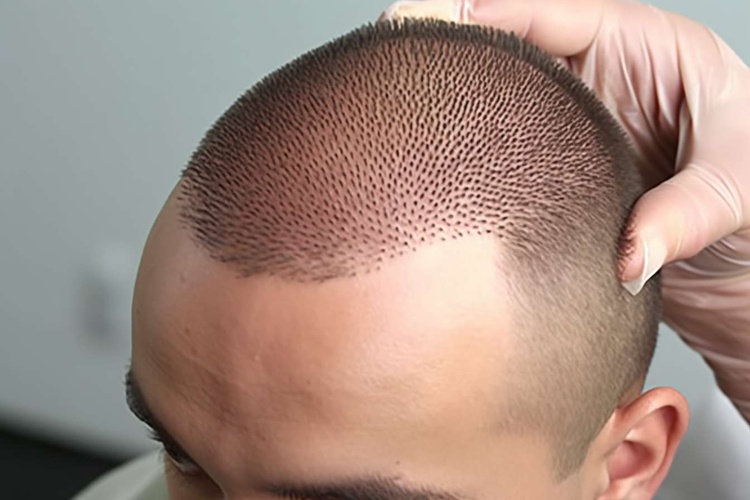Mastering the Art of Hair Transplantation
Hair loss affects millions worldwide, impacting self-esteem and confidence. For decades, those seeking to restore their hairline had limited options, often resulting in unnatural-looking results. However, the field of hair transplantation has undergone a remarkable transformation in recent years. Advances in technology and techniques have revolutionized the industry, offering hope to those struggling with hair loss. This article delves into the intricate world of hair transplantation, exploring its history, current practices, and future potential. We'll examine the science behind the procedure, discuss the various methods available, and provide insights into what patients can expect throughout the process.

As the decades progressed, surgeons refined their techniques, developing methods to create smaller, more natural-looking grafts. The 1990s saw the introduction of Follicular Unit Transplantation (FUT), which involved harvesting a strip of scalp and dissecting it into individual follicular units. This method allowed for more precise placement of grafts and improved overall results.
Modern Techniques: FUE and Its Variations
Today, Follicular Unit Extraction (FUE) has become the gold standard in hair transplantation. This minimally invasive technique involves extracting individual follicular units directly from the donor area using a small punch tool. FUE offers several advantages over traditional methods, including reduced scarring, faster recovery times, and the ability to harvest hair from areas other than the scalp.
Several variations of FUE have emerged in recent years, each with its own unique benefits:
-
Robotic FUE: Utilizing advanced robotics and artificial intelligence to assist in graft harvesting and placement.
-
No-Shave FUE: Allowing patients to undergo the procedure without shaving their entire head.
-
Long Hair FUE: Enabling the transplantation of longer hair follicles for immediate aesthetic results.
These innovations have made hair transplantation more accessible and appealing to a broader range of patients, including those who may have been hesitant to undergo more invasive procedures in the past.
The Science Behind Hair Growth and Loss
To truly appreciate the art of hair transplantation, it’s essential to understand the science behind hair growth and loss. Hair follicles go through a cyclical process of growth, regression, and rest, known as the hair growth cycle. This cycle consists of three main phases: anagen (growth), catagen (transition), and telogen (rest).
Various factors can disrupt this cycle, leading to hair loss. The most common cause of male pattern baldness is androgenetic alopecia, a genetic condition that causes hair follicles to become sensitive to dihydrotestosterone (DHT). This sensitivity leads to progressively shorter growth phases and eventually, the miniaturization of hair follicles.
Hair transplantation works by relocating DHT-resistant follicles from the back and sides of the scalp to areas affected by hair loss. These transplanted follicles retain their genetic resistance to DHT, allowing them to continue growing in their new location.
Assessing Candidacy and Planning the Procedure
Not everyone is an ideal candidate for hair transplantation. Surgeons must carefully evaluate each patient’s individual circumstances to determine the best course of action. Factors considered include:
-
The extent and pattern of hair loss
-
The quality and quantity of donor hair
-
The patient’s age and overall health
-
Realistic expectations for the outcome
Once a patient is deemed suitable for the procedure, the surgeon will work closely with them to create a customized treatment plan. This involves designing a natural-looking hairline, determining the number of grafts needed, and deciding on the most appropriate technique for harvesting and transplanting the follicles.
The Transplantation Process: From Extraction to Implantation
On the day of the procedure, patients typically undergo local anesthesia to ensure comfort throughout the process. The surgeon begins by extracting follicular units from the donor area, either through the FUT or FUE method. These grafts are then carefully sorted and prepared for transplantation.
Next, the surgeon creates tiny incisions in the recipient area, taking care to angle them in a way that mimics natural hair growth patterns. The prepared grafts are then meticulously placed into these incisions, with attention paid to factors such as hair density, direction, and overall aesthetic appearance.
The entire process can take several hours, depending on the number of grafts being transplanted. Many patients find the procedure to be relatively painless and are able to return home the same day.
Post-Procedure Care and Long-Term Results
Proper aftercare is crucial for ensuring the best possible results from a hair transplant. Patients are typically given detailed instructions on how to care for their scalp in the days and weeks following the procedure. This may include:
-
Avoiding strenuous activity for a specified period
-
Sleeping with the head elevated
-
Gently washing the scalp according to the surgeon’s instructions
-
Protecting the scalp from direct sunlight
It’s important to note that transplanted hair will typically fall out within the first few weeks after the procedure. This is a normal part of the process, as the follicles enter a dormant phase before beginning to grow new hair. Patients can expect to see initial results within 3-4 months, with full results becoming apparent after 12-18 months.
The Future of Hair Transplantation
As technology continues to advance, the field of hair transplantation is poised for even more exciting developments. Some areas of research and innovation include:
-
Hair cloning and multiplication techniques
-
Improved methods for harvesting and preserving donor hair
-
Enhanced visualization and mapping technologies for more precise graft placement
-
Combination therapies incorporating stem cells and growth factors
These advancements hold the promise of making hair restoration even more effective, efficient, and accessible to a wider range of patients.
In conclusion, hair transplantation has evolved into a sophisticated and highly effective solution for those struggling with hair loss. By combining artistic skill with scientific precision, modern hair transplant surgeons are able to create natural-looking, long-lasting results that can truly transform a patient’s appearance and confidence. As the field continues to progress, we can expect even more innovative techniques and technologies to emerge, further refining the art of hair restoration.




